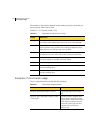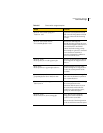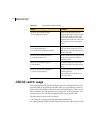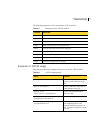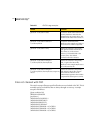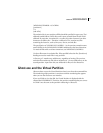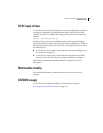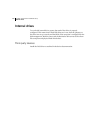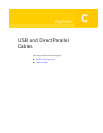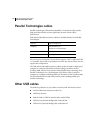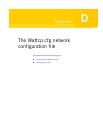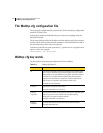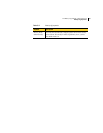
178 Transfer methods and hardware setup
Transfer and hardware requirements
Transfer and hardware requirements
Before using Norton Ghost, consider the transfer and hardware requirements for
the transfer method that you want to use. Ensure that all hard drives are installed
correctly and that the BIOS of the system is configured and shows the valid
parameters of the drives.
Peer-to-peer connections
Peer-to-peer connections enable Norton Ghost to run on two computers,
copying drives and partitions and using image files between them.
LPT or USB connections
On an LPT/parallel port connection, use a parallel connection cable and a parallel
port to connect the computers. For data transfer of approximately 19-25 MB/
min, Norton Ghost provides support for the Parallel Technologies universal
DirectParallel cable. For peer-to-peer USB port connections, use a USB 1.1 cable
that supports a host-to-host connection and a data transfer of approximately 20-
30 MB/min.
ECP is the best option for LPT connections and has a data transfer rate of
approximately 5 MB/min. Norton Ghost must be running under DOS on both
computers.
See “USB and DirectParallel Cables” on page 181.
TCP/IP connections
Connect the computers with an ethernet or token ring network interface card and
an established network connection, which includes one of the following:
■ Crossover cable
■ Coaxial or twisted pair cable
■ Ethernet or Token Ring (Network Interface Card)
■ Ethernet or MSAU hub
Install a network interface card (NIC).



